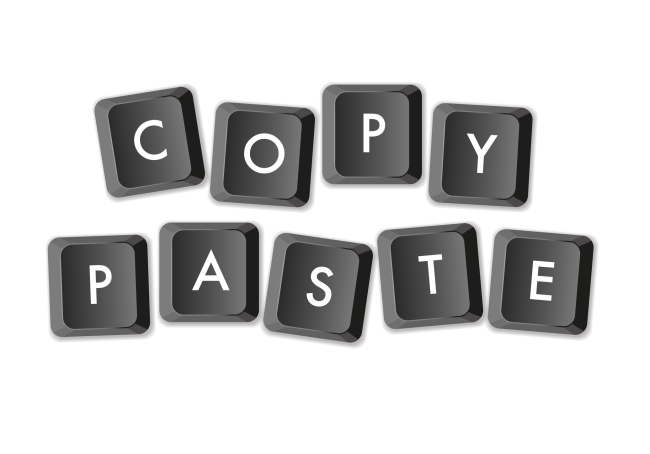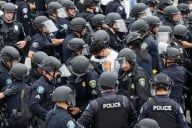You have /5 articles left.
Sign up for a free account or log in.

Jobalou/DigitalVision Vectors/Getty Images
Back in January, it seemed as though we were headed toward a plagiarism war. Recent plagiarism accusations from Christopher Rufo have stoked those concerns, while also revealing that the campaign so far has been politically one-sided. How should we think about all of these accusations? Academic integrity is essential to the proper functioning of higher education, but it shouldn’t be used as a political weapon. How do we know when a particular instance of plagiarism amounts to genuine wrongdoing? We need a new way of thinking about plagiarism, in the hopes of preventing excess casualties.
One reason we need a new way of thinking is that the politicization of plagiarism is bad for all involved. It’s bad when people go plagiarism-hunting for political reasons, and it’s bad when people try to downplay obvious examples of plagiarism because the accusations came from someone on the other side of the political aisle.
John McWhorter has a helpful partial explanation for the politicization problem. He points out that the term “plagiarism” is broad enough to encompass multiple kinds of wrongdoing. Opportunistic accusers seize upon relatively mild examples of plagiarism (which are also relatively easier to find) in order to take down their political targets. In response, the accused (or their allies) go too far by trying to argue that the offenses shouldn’t count as plagiarism at all. Both sides are distorting the facts, and part of what enables the disconnect between the two sides is the multiple and variable meaning of “plagiarism.”
McWhorter’s solution is to propose two different words: keep the word “plagiarism” for the genuinely wrongful acts of idea theft, and start using a new term for the less egregious instances of “cutting and pasting.”
There is indeed an important distinction between cutting (or copying) and pasting on the one hand, and stealing ideas on the other. Copying and pasting is typically a result of laziness, or a failure of carefulness, but idea theft is more serious: it is at best a failure of gratitude and at worst selfishly malicious.
McWhorter’s proposal also takes into account our human tendency to avoid describing ourselves in morally loaded terms. We don’t want to think of ourselves as plagiarists, because the term has strong negative associations, and therefore we don’t like it when our friends (or people in our tribe) are labeled as plagiarists. These negative associations tempt us toward partisan treatments of plagiarism.
Despite its virtues, however, McWhorter’s solution doesn’t go far enough. One reason is that it ignores the question of intent. A genuine idea theft could be accidental (for example, it could be attributable to a faulty memory), and an instance of copying and pasting could be malicious (for example, if someone steals a particularly important turn of phrase, such as a slogan). So intent matters, and so do other factors (such as quantity) that can’t be captured by a simple one-dimensional distinction.
We could try to come up with a new word for all of the different types of plagiarism, but that would be difficult to execute in practice. We do need a new way to talk about plagiarism that can help cut through the politicization, but a neologism or two isn’t going to be sufficient.
Thus, I propose a different solution: the counterfactual test. It is relatively simple to describe, but also flexible enough to handle the various complexities that beset any attempt to get a handle on what counts as plagiarism, and when and to what extent it should count as wrongdoing.
The way to begin the counterfactual test is to imagine a situation in which, counter to fact, the act of plagiarism hadn’t occurred. The key constraint on this thought experiment is that the alternative situation has to be as close to the actual situation as possible: we want to change, using our imagination, only those details that must be changed in order to produce the counterfactual difference.
The next step is to mentally examine that alternative situation and ask how much difference our changes have made. If the differences are significant, then that’s evidence that significant wrongdoing has occurred; if the differences are minimal, then the wrongdoing is also slim to none. In other words, a particular instance of plagiarism is wrong to the extent that removing it from history would make a big difference.
This counterfactual test might seem esoteric, but people use it all the time (although they probably don’t think of it as a “counterfactual test”). For example, you might kick yourself because you forgot to take the trash out, but then experience relief when you realize that today’s a holiday and nobody’s coming to pick the trash up anyway. The source of your regret and (mild) self-recrimination was your implicit imagining of the difference between the actual situation and the counterfactual situation: In the actual world, you’re stuck with overflowing trash bins for another week; in the counterfactual world, all is clean and tidy. Recognizing the significant difference between the two situations is what grounds your negative feelings toward yourself. But: when you realize that today’s a holiday, you implicitly and unconsciously change the comparison between possible worlds. In light of this new information, you recognize that the state of your trash bins would be no different today, even if you had remembered to take them out, so there isn’t really any reason to get worked up about it.
Let’s apply the counterfactual test to some typical examples of plagiarism. Suppose that someone copies and pastes a standard definition of a key term, with the intent of revising it later, and then forgets or neglects to go back and make the revisions. In the nearest possible world in which this act of plagiarism doesn’t occur, everything is pretty much the same: the researcher simply remembered to make the revisions, and then made them, and the resulting text is very similar to the actual (plagiarized) text. The only difference is that the text has been revised enough so that it resembles the original but without being a plagiaristic theft of the original. Very little difference, thus very little wrongness. This is what the counterfactual test tells us, and this lines up with our commonsense intuitive judgments about this type of case.
Suppose, however, that a scientist copies someone else’s experimental results and publishes them as his own. The counterfactual test gives us a very different verdict in this case. In the nearest possible world without the theft, those same results are published at a different time and attributed to a different person, with the consequent notable changes in recognition, career success, and so on. This is a significant difference between the two worlds, and thus points toward a significant amount of moral wrongness. This, again, lines up with our intuitive judgments.
The benefits of adopting the counterfactual test are twofold. First, it gives us a robust and sophisticated explanation of our commonsense judgments about different types of plagiarism. Rather than trying to come up with various labels for the different types, we can leave the words alone. We can run the counterfactual test without having to worry about whether we’re using the right label, or whether we need to add yet another label to the lexicon. (On the other hand, nothing about the counterfactual test prevents us from adding a new label if it proves itself to be particularly useful.)
The second benefit of adopting the counterfactual test is that it can help us have better public discussions about plagiarism. As alluded to above, partisanship has poisoned some of the recent public discussion of plagiarism. In order to avoid this partisanship, we need some tools, and the counterfactual test is the type of tool that can help us approach cases of plagiarism, both old and new, with a clear and objective eye. (In some cases, of course, a morally insignificant act of plagiarism might still violate institutional policies or disciplinary norms. Handling these cases will require looking closely at those policies or norms.)
Try it for yourself: The next time you encounter an instance of plagiarism, ask yourself how significant the differences would be if the plagiarism hadn’t occurred. You’ll be in a better position to evaluate the seriousness of the offense, and also less likely to let political biases affect your judgment.


a818.jpg?itok=YusUVfky)
